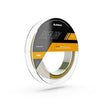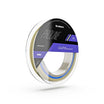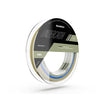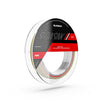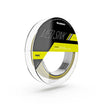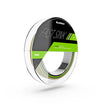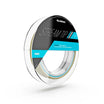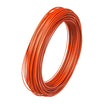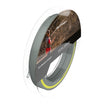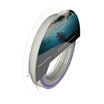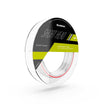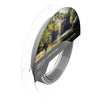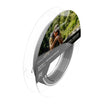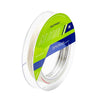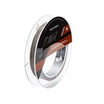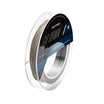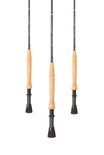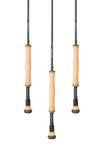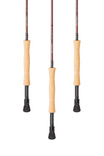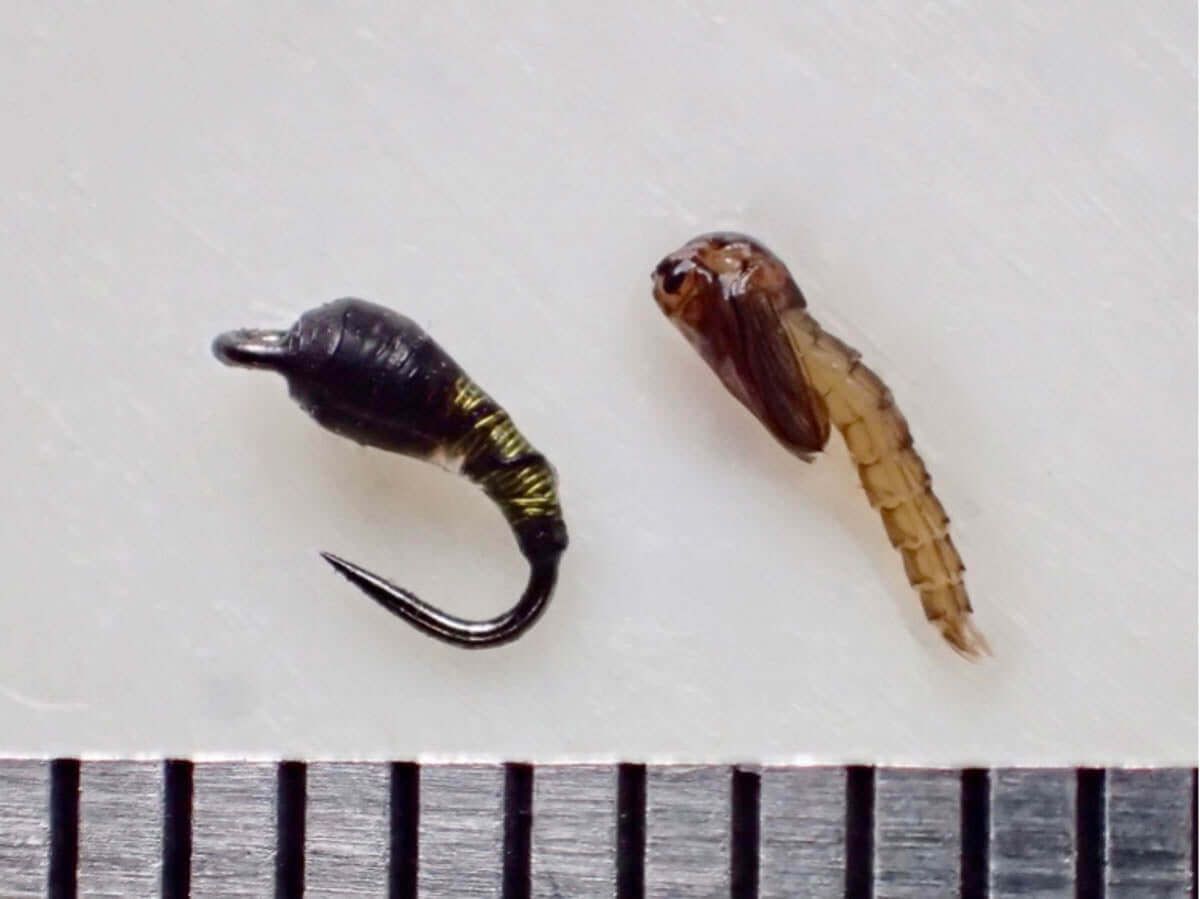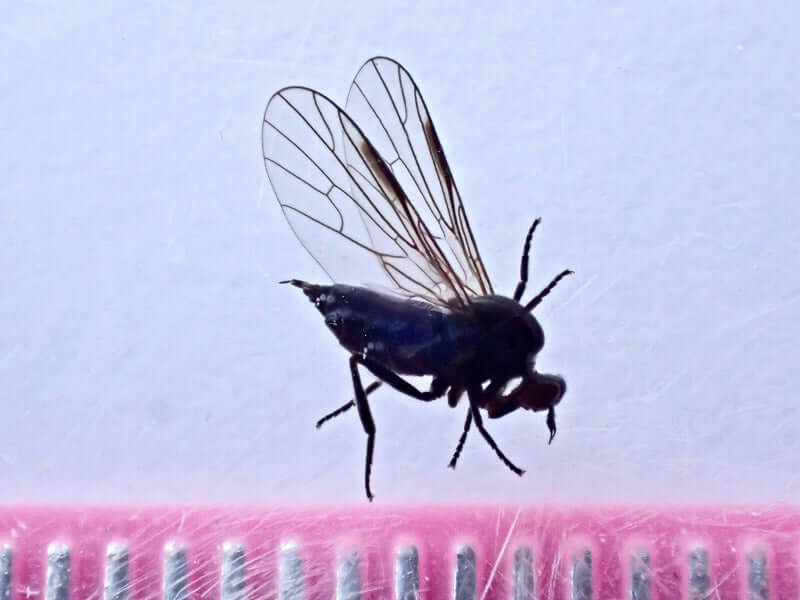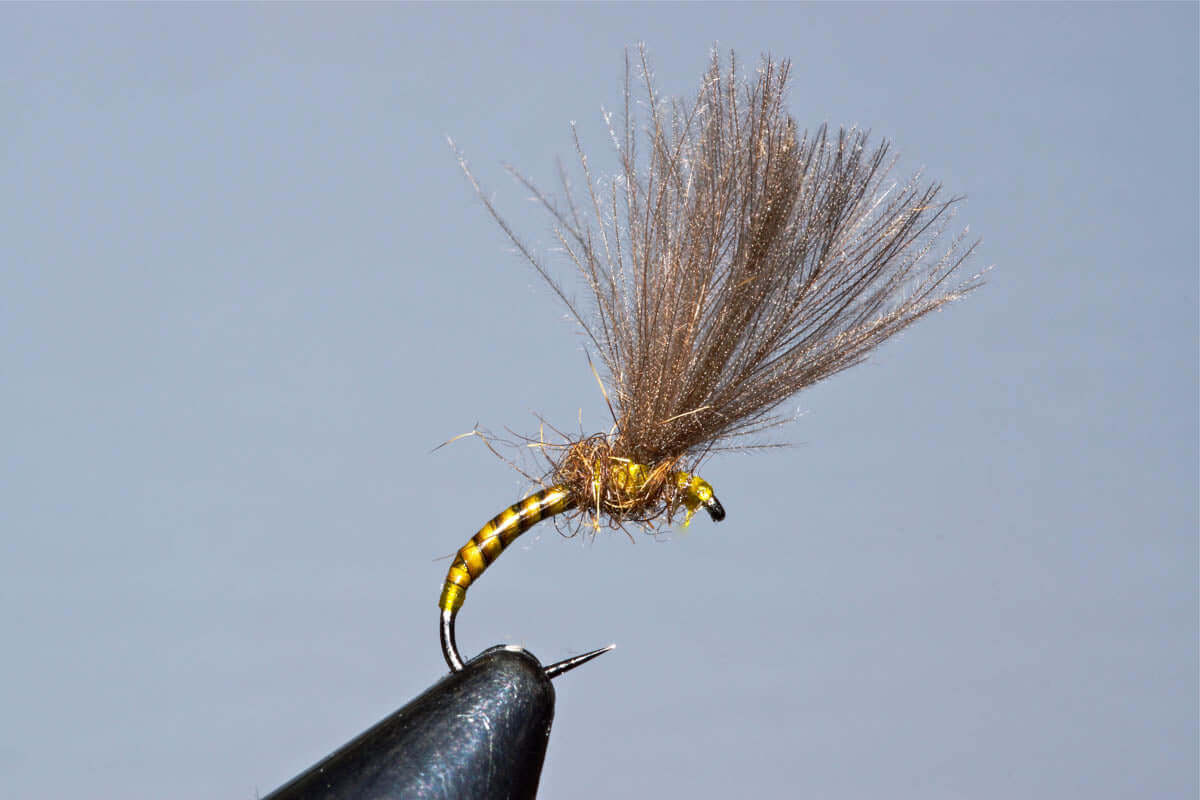by Dave Southall
Why am I such an advocate of tiny flies for grayling? Whilst I’ve caught grayling on big flies ranging from size 12 long-shank Peeping Caddis to size 12 Streamers there have been many times when the grayling that I’ve been targeting have refused all but the tiniest of offerings. Over the last 20 years I’ve become more and more aware of the value of Micro-Flies, size 24 and smaller. Let me recount some examples of when they have proved to be a vital ingredient of my success.
The 16th of June 2009, Driffield West Beck, I had come to target a big grayling on a deep bend that had resided in the same spot since the start of the trout season. I started my assault with a weighted Orange Gammarus, a fly that has stood me in good stead on the beck. The fish was actively feeding but my offering was studiously ignored. Shrimps in a range of hues from subtle tan to garish pink received the same disinterested response, as did Peeping Caddis, Black-bead Pheasant Tail Nymph and several other patterns. Finally in desperation I tied on a size 26 Black Buzzer Pupa tied with a 1.5mm tungsten bead. I cast my tiny fly well upstream to give it a chance to sink the four feet to where the grayling was swinging from side to side intercepting food items. Being unable to see such a small drab fly my only option was to estimate when my fly was in the target zone and respond to any sign that the grayling had intercepted it. The fish swung to one side then stopped abruptly with pectoral fins flared and I instinctively lifted the rod. All went solid. I’d hooked the bottom! Then the bottom moved and I had the excitement and stress of playing a big grayling on a size 26 hook and 0.10mm/7x tippet. It proved to weigh 2lb 10oz.

2lb 10oz grayling caught with a size 26 Black Buzzer Pupa
The 4th of March 2020 at my local small still water, Wansford Lake, fed from the Driffield Chalk Stream System and home of a small number of good sized grayling. This heavily silted U-shaped canal is populated by huge numbers of tiny Chironomids and the trout (stocked rainbows and wild browns) and grayling tend to get totally preoccupied when feeding on the larvae (bloodworms), pupae and adults. At such times the fish can become very size-specific with regard to what they are prepared to eat, regularly refusing size 24 pupae imitations yet avidly taking size 30s, as long as the presentation is perfect. On the day in question there were several visible rainbows and a good grayling actively feeding in the flow along the margins of a bend. I set up my 10’ 6” Zero weight rod with a micro nymph line and 12’ leader ending in 0.09mm tippet and a size 30 Olive Wire Buzzer Pupa. The capture and gentle syringing from the throat of the first rainbow that I caught sonfirmed that they were full of 5mm long Olive Buzzer Pupae. Over the next hour I landed another 5 rainbows and the grayling which turned the scales at 1lb 10oz.

1lb 10oz Wansford Lake grayling

Size 30 Olive Wire Buzzer Pupa and the real thing
Many of my other big Wansford Lake grayling, up to well over 2lb, have been caught on size 24 or smaller Buzzers or a Micro-Bloodworm tied on a size 20 to 22 hook, the latter based on a pattern shown to me by Grayling Society Regional Secretary Brian Clarke.

Size 20 Micro-Bloodworm
So what about tiny dry flies? For the last 20 years I’ve regularly fished CdC flies down to size 24 short shank and occasionally down to size 30, but in the last few years size 30 short shanked CdCs have been used far more frequently. Let me cite a couple of examples.
The 14th of November 2018 on an industrial Yorkshire river. It was a sunny day and the breeze was blowing sycamore leaves onto a long smooth glide and with them huge numbers of Aphids that littered the surface resulting in a good number of rising grayling along 100 metres of river. Stu Crofts, Steve Donohue and I set up with small CdCs. I started with a size 24 IOBO Humpy which brought some response from the grayling but far less than I had expected. My fly looked huge compared with the real thing so I changed to a size 30 Minimalistic Micro-Midge tied on a short shank Gamakatsu C12 barbless midge hook which dramatically improved my catch rate. Stu took a photo of the throat contents gently syringed from one of his grayling, it consisted of aphids in a range of colours but all were the same size as my size 30 fly, 3mm long. My final tally was over 30 grayling landed. A few days later I had similar results on a different West Yorkshire river.

Contents of a gentle syringing from the throat of a grayling (photo by Stuart Crofts)
The 25th January 2019 on another industrial yorkshire river. It was a dull, breezy day with a maximum temperature of 100C. I fully expected to be fishing a team of shrimps/bugs/nymphs, but on arrival I saw rising fish. They were taking ‘specks of soot’ in the smooth glides. These tiny midges were far smaller than my size 30 CdC MMM, but between noon and 3.15pm 29 grayling succumbed to my tiny dry fly, whilst a friend Euronymphing a team of subsuface flies had 16. This scenario was repeated several time that winter.
The biggest problem when fishing tiny flies is presentation. Micro-Buzzers, Bloodworms and Nymphs move incredibly slowly in small spurts of movement so are best fished dead-drift or sinking/rising in the water collumn at snail-pace. Micro-dry flies need to be fished dead-drift with not a trace of micro-drag. Long leaders, very fine tippet and when required repeated casting till a good drift is achieved will help considerably, as will very accurate casting since fish will rarely move far for such small food items.
Visibility is another issue when fishing tiny dry flies. My micro-dry flies are virtually exclusively CdCs and I tie two versions, one with light tan CdC and one with dark CdC. The dark ones when coated with a very thin treatment of Roman Moser Miracle Float show up well against a light background and the paler ones coated with white fumed silica powder floatant show up well against dark backgrounds. In addition very accurate casting helps me to know precisely where to look when my fly lands on target.
The use of Big Eye hooks such as Daiichi 1110 and Gamakatsu C12 BM hooks helps to solve the problem of tying the fly on.
As for the patterns, keeping the tying simple makes it easy to tie even size 30 short-shank flies, particularly if a magnifying lamp is used.
My favourite patterns are as follows:

Wire Micro-Buzzer Pupa
Hook: Size 24 Tiemco 2488, size 24 Tiemco 2487 BL, size 24 Daiichi 1130 or size 26 and size 30 gamakatsu C12 BM
Abdomen: 0.09mm wire in red, olive, black
Rib: 0.09mm wire in red, silver or black
Head: 0.09mm wire in black or brown
Just wind the wire and fret off the ends then coat with UV resin or Super Glue. For nymphs just tie in a few strands of CdC as a tail and trim to length. A 1.5mm tungsten bead can be used as a head on size 24s

Micro-Bloodworm
Hook: Size 22 Daiichi 1120 or 1130 or similar Grub hook
Bead: 1.5 or 2mm red Tungsten
Body: Red holographic tinsel
Rib: 0.09mm red or pink wire
Tail: Red or pink number 6 Pole Elastic or Flexifloss

Minimalistic Micro-Midge (MMM)
Hook: Size 24 Tiemco 2488, size 24 Tiemco 2487 BL, or size 26 and 30 Gamakatsu C12 BM
Thread: Tan 8/0 well waxed
Wing and legs: 1 CdC feather tip

Micro-Shuttlecock
Hook: Size 22 and 24 Tiemco 2488, size 22 and 24 Daiichi 1130, size 22 Daiichi 1120, size 22 or 24 Tiemco 2487 BL, Size 26 and 30 Gamakatsu C12 BM
Thread/body: Yellow, tan or black 8/0 (coat body with UV resin or Super Glue
Wing: 2 or 3 tiny CdC tips (tied in with vertical and horizontal turns between the CdC and hook to lock the feathers in)
Gamakatsu C12 BM hooks, my favourite tiny hooks, are available from Deer Creek but be warned they are very expensive.
Please note that the photos of grayling were on waters where there is no wading and so the fish had to be photographed on the bank. The camera was set ready before the net was removed from the water and a very quick shot was taken as I reached to remove the hook and as soon as possible return the fish in the net to the water. I take great care with catch and release to ensure the welfare of the fish.



